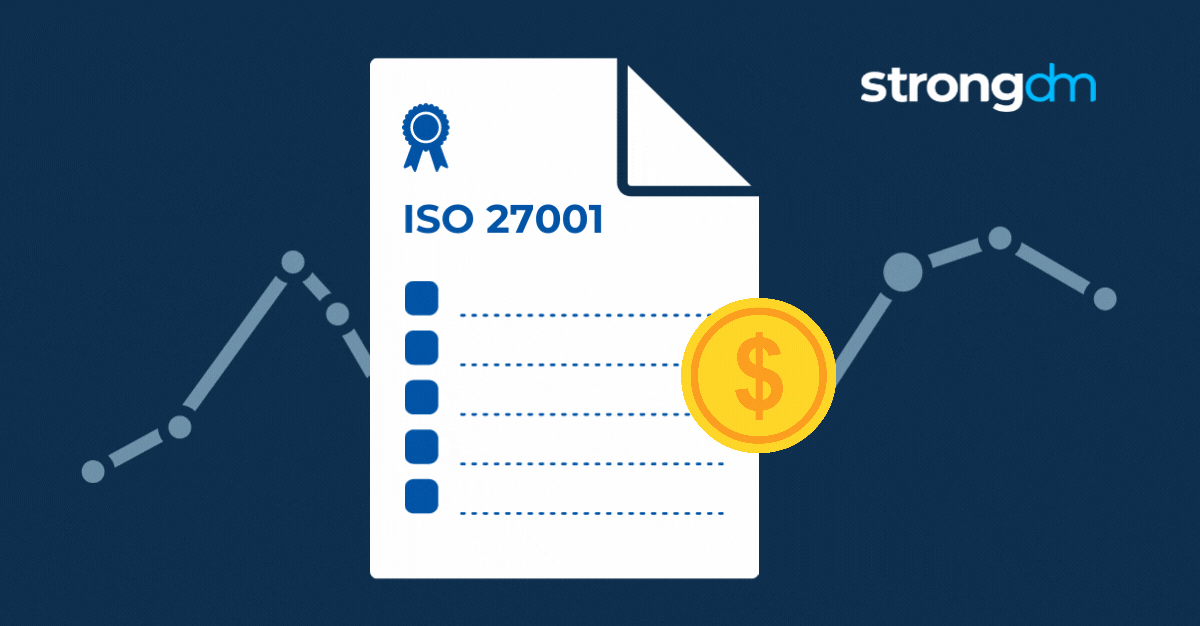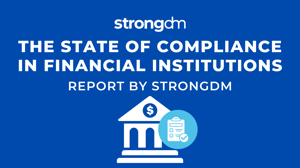How Much Does ISO 27001 Certification Cost in 2025?


Written by
John MartinezLast updated on:
October 17, 2025Reading time:
Contents
Built for Security. Loved by Devs.
- Free Trial — No Credit Card Needed
- Full Access to All Features
- Trusted by the Fortune 100, early startups, and everyone in between
Summary: In this article, we’ll look at the overall price tag for one International Standards Organization certification (ISO 27001), along with some of the factors that impact costs and why they vary across organizations. You’ll learn about different ISO 27001 certification costs, from the audit, with its ISO 27001 exam cost, to implementation and maintenance. You’ll also see some differences in the price tag for certification in other countries. By the end of this article, you’ll get a sense of the factors involved in ISO 27001 certification and be able to compare quotes to decide your organization’s needs.
How Much Does ISO 27001 Certification Cost?
With 4 billion internet users, a burgeoning work-from-home infrastructure, and many of our financial, medical, and intellectual property assets stored in the cloud, it’s increasingly crucial to protect our data. In fact, an increasing number of companies are pursuing ISO 27001 security certification; applications are up 22% from 2010 to 2020. ISO sets standards for security and compliance, but how companies reach them varies. Thus, asking, “How much does it cost to get ISO 27001-certified?” typically elicits few specific answers. Not all ISO 27001 certification costs are equal. Differences will depend on:
- How large your organization is
- How many standards you choose to be certified in
- The risk profile of your company (high-risk industries come with added costs)
- The complexity of your Information Security Management System (ISMS)
Costs include audit costs (audit days, time spent, travel fees for on-site work) and administrative fees. Ultimately, the cost of the audit can range from $5,000 to $35,000. Small companies with under 50 employees typically see three to six audit days and overall costs from $5,000 to $10,000. The total cost per audit day varies by certification bodies (CBs), but a reasonable estimate is $1,500 per day. That means the ISO 27001 lead auditor certification cost is just part of the total cost.
However, the audit itself can be a small part of the total certification cost. Preparing for a certification audit can run from $5,000 to $75,000, not including internal employee time.
Preparation Costs
Companies that have never defined their ISMS can expect considerable time and expense preparing for certification, with associated costs between $10,000 and $60,000. Why? Before the audit begins, they’ll need to:
- Write the policies that will reduce the risks faced by users
- Decide on a risk assessment methodology
- Conduct a risk assessment
- Write a Statement of Applicability, summarizing the security measures taken and logic statements about those not taken
- Write a Risk Treatment Plan that clarifies where risks are (as identified in the risk assessment) and how they’ll be treated, with deadlines, dependencies, and employees responsible
- Define how to measure the success of controls and at what levels
- Conduct an internal audit: report, review, and correct problems
Before the ISO 27001 external audit, the first step is to conduct an internal audit to identify any potential problems that could lead to failing the assessment. The internal audit can be completed by a team at your company or an independent auditor. If you choose an independent consultant they do not need to be a certified ISO 27001 auditor for internal audit purposes.
Many small companies don’t have the employee power to spare and choose to employ an independent consultant to perform the audit. An internal audit can cost roughly $7,500.
Related costs preparing for ISO 27001 compliance certification
Developing the documentation for certification can be a daunting task, so many organizations incur fees pursuing the competence they need to get the job done. This can include:
- Paying ISO 27001 consultant fees: A consultant can tell organizations what the best practices are, what the standards mean, and how to apply them efficiently. They also have expertise in developing custom solutions for the unique needs of ISO 27001 individual certification cost based on a company’s tech stack. A consultant charges around $1,500 per day.
- Performing a Gap Analysis: Identify the parts of a company’s existing ISMS and what’s missing. A gap analysis can be both an expense and a tool to save money later. It costs ~$6,000 and brings an outside understanding of your systems and where there are deficiencies that need to be addressed before the audit. It also provides insight into how to remedy gaps.
Implementation Costs
Like a blueprint without a building, the documentation developed during the preparation stage means nothing if it’s not reflected in your business. Implementation costs include all the teamwork that goes into building compliant security systems, as well as training workers on how to use them and managing the process so that you know your systems are being used correctly. In addition to people costs, you’ll keep logs, confirming your methods are working.
Ongoing implementation costs
Implementation is not a one-and-done cost. Here are a few of the ongoing expenses you can expect while implementing security compliance:
- Formal ISO 27001 training and certification cost: Training costs around $1,000 annually, depending on the company you choose.
- Productivity costs: You’ll have to dedicate time to updating your ISMS, documenting new risks and policies, managing your certification, and implementing new systems to stay compliant. The more time spent on security, the less time your teams will spend on other priorities. Need help? Expect to pay a salary of around $90,000 for a full-time compliance professional.
- Maintaining licenses for software and tools to achieve compliance: Software to help shore up security risks can include network security monitoring and encryption tools, all for around $5,000. There are even compliance software solutions to help you develop your risk management policies for around the same price.
- ISO 27001 lead implementer certification costs: You can become or hire a lead implementer to carry out certification implementation and maintain compliance.
Maintenance Costs
After you’re certified, you’ll be required to conduct an internal audit and a surveillance audit in years two and three, respectively. Each costs roughly $7,500, so the average cost for both is $15,000 annually.
Potential additional maintenance costs
Surveillance and internal audits cost less than a certification audit, which is good news for keeping costs reasonable. But in reality, other costs can add to the expense:
- Scope extension: New services and locations? The scope of the auditing may expand, adding to the cost.
- Additional third-party tests: ISO 27001 initial paperwork may have identified vulnerabilities and risks, but companies often include vulnerability assessments (~$2,000) and penetration tests ($5,000 to $20,000) as part of their regular maintenance so that weak spots can be identified and configurations updated.
How Much Does ISO 27001 Certification Cost in Other Countries?
Because ISO 27001 is a global standard, it is respected worldwide. Here are some estimates of average costs for the certification in different regions:
Is ISO 27001 Worth the Price?
Yes. ISO 27001 certification comes with multiple benefits to offset the ongoing costs:
- Access to new customers: Procurement is getting more stringent. Multiple data leaks have increased awareness about the importance of security. Subsequently, the number of companies that value compliance certification has skyrocketed. Do you want access to those clients? You’ll need to meet their heightened standards.
- Acceleration of sales velocity: Not only will you access new customers, but you can also shorten sales cycles when you have security compliance already in place.
- A stronger security mindset: It helps establish a security culture internally. Certification is not easy, and it reinforces to the whole organization that it’s a worthy investment. Since it requires employee training, it touches most employees in a workplace, creating heightened awareness and respect for data security.
- Freedom from the costs of breaches and compliance fines: Standout security comes with long-term value. You’ll never know you’re avoiding that big security breach, but that’s the point. Certification protects the investment you’ve made in your business’ success. It also protects against less catastrophic security snafus like service interruptions and fines from non-compliance with government requirements, like HIPAA or GDPR.
Can You Reduce the ISO 27001 Costs?
You can reduce costs by prepping for certification diligently. There are three primary ways to reduce costs:
- Prepare and implement tasks without external support. You’ll need the proper expertise and capacity, which can involve multiple parts of the organization. Ask yourself whether you can develop your ISMS, including risk assessment, policy development, establishing security metrics, and handling an internal audit.
- Don’t reinvent the wheel if you don’t have to. You don’t have to create everything on your own. You can employ templates and training to gain expertise where your organization lacks it.
- Reduce and streamline preparation. Eliminate unnecessary documents and processes. With a thorough gap analysis, you can focus solely on the needs that get you to the standards. You’ll need to read and interpret those standards.
How StrongDM Can Help You Save on ISO 27001 Certification Costs?
StrongDM provides companies with better security and the audit trail you’ll need to back it up. StrongDM helps you manage and audit access to your databases, servers, clusters, and web applications. StrongDM supports certification for both SOC and ISO certifications.
Ready to get started? Schedule a free demo and see how you can use StrongDM’s suite of tools to protect your customer data and get certified.
Next Steps
StrongDM unifies access management across databases, servers, clusters, and more—for IT, security, and DevOps teams.
- Learn how StrongDM works
- Book a personalized demo
- Start your free StrongDM trial

Categories:

About the Author
John Martinez, Technical Evangelist, has had a long 30+ year career in systems engineering and architecture, but has spent the last 13+ years working on the Cloud, and specifically, Cloud Security. He's currently the Technical Evangelist at StrongDM, taking the message of Zero Trust Privileged Access Management (PAM) to the world. As a practitioner, he architected and created cloud automation, DevOps, and security and compliance solutions at Netflix and Adobe. He worked closely with customers at Evident.io, where he was telling the world about how cloud security should be done at conferences, meetups and customer sessions. Before coming to StrongDM, he lead an innovations and solutions team at Palo Alto Networks, working across many of the company's security products.
You May Also Like




